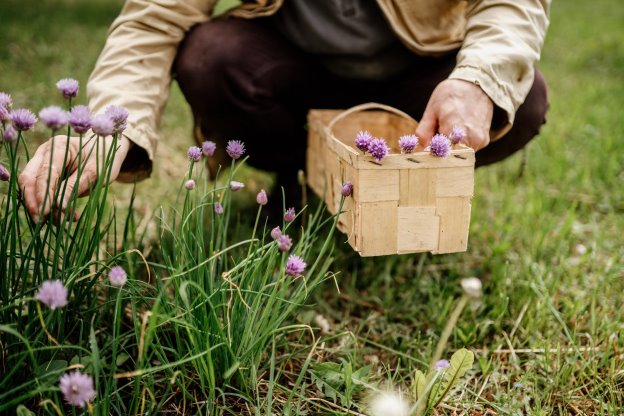Lithuania Travel, the country’s national tourism development agency, is launching a new project called Taste the Seasons Change.
Birch tree sap, fresh nettle pasta, rhubarb brew – these are just a few menu items that, although wildly popular in Lithuania, remain virtually unknown outside of the country.
Taste the Seasons Change provides an exclusive look into Lithuania’s best-kept culinary secrets and introduces its seasonal kitchen that is based on fresh and organic vegetables and herbs sourced straight from the local farmers’ markets.
Spring – an Exotic Season for Lithuanian Cuisine
The journey to uncover the country’s cuisine secrets begins with Top 3 Spring Flavours and Top 4 Spring Experiences – a brief introduction to Lithuania’s earthly goods that pop up after the winter is over. Accompanied by insights from gastronomical gurus, it reveals the country’s ingredients that traditionally have provided the spring dishes with a sensational twist and awoken the sleeping senses.
In this season, food experts encourage to be on the lookout for parsnips, Jerusalem artichokes, smelt, and spring onions as their flavors and nutritional value are at their peak this time of the year. Though when it comes to bizarre early-spring delights, birch tree sap is a noteworthy mention. In addition to being refreshing, it is an unparalleled choice when it comes to immune-boosting foods – at least until later in the spring, when the other two outlandish superfoods –nettle and wheatgrass– complement the Lithuanian cuisine.
Goodbye, Kombucha – Hello, Birch Tree Sap!
Even though Lithuanians have been drinking this heavenly refreshment for millennia, birch tree sap has become the country’s new kombucha. With its growing popularity, today, the drink is not only available in artisanal food markets but is also sold in grocery stores, cafés, and bars. According to Gintarė Didžiokaitė, Brand Manager of Straikas, a company that is bringing birch tree sap to the masses, not only does this drink create an unforgettable refreshing experience for the palette but has also been renowned among the health-conscious crowd.
“Tree sap is rich in minerals and amino acids that aren’t found anywhere else in nature. Thus we like to say that we don’t make the sap, but rather borrow it from nature itself,” explains Didžiokaitė in the interview. “Sap is used to rid the body of toxins and other harmful substances. For instance, it is often used by athletes for detox purposes. And although it’s great for hydration just like water, sap is also really tasty.”
Nettle – Prickly yet Delicious
As for mid and late spring, among all the delights that peak their heads through the soil, are gyromitra mushrooms, rhubarb, asparagus, and –perhaps surprisingly so– nettle! Though stinging to the touch, this seemingly obscure plant is a versatile green leafy vegetable that goes perfectly with various savory dishes.
“You shouldn’t miss out on the stinging nettle. It’s a truly wild ingredient that can be put in a soup, mixed with quark cheese, or eaten in salads. Green fresh pasta with stinging nettle is a nice spin on fresh spinach pasta. It looks delicious and modern, using a very traditional ingredient,” says Renata Nečajienė, renowned food expert and the author of the popular Seasonal Kitchen blog.
Wheatgrass for Bulletproof Immune System
Speaking of the color green, wheatgrass –either sprouted or juiced– is another springtime staple of Lithuanian cuisine. This leafy plant that is initially not the most palatable of foods, is densely packed with vitamins A, C, and E, and is irreplaceable for keeping our energy levels high and the immune system strong. Lately, wheatgrass juice has become a huge health fad. And as Lithuanians like to joke, it is the only kind of shot you won’t be ashamed of downing at 11 AM.
Taste the Seasons Change provides an opportunity to experience the wonders of Lithuania’s gastronomic world and dive deeper into the traditions behind the country’s cuisine. While the project begins with a focus on Lithuanian cuisine in spring, articles covering the gastronomical discoveries of summer, and the following seasons are soon to come. Learn more about the country’s spring cuisine and its richness in Spring Explosion: A Culinary Travel Guide.

























